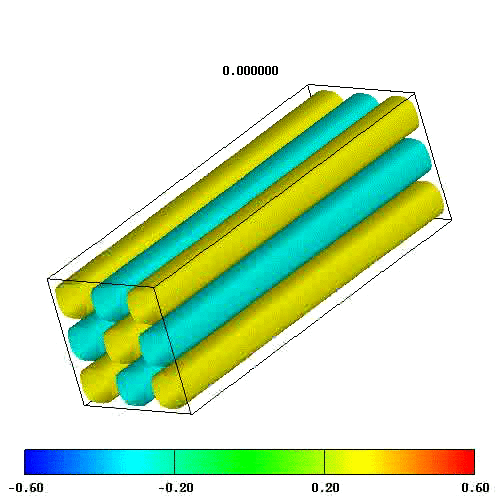Self-organization of Plasmas
Simulation of 3D Hall-MHD
The Hall-MHD (magnetohydrodynamics) is a two-fluid modeling of plasmas: an extension of MHD (in which electrons and ions move together) to include the effect that ions cannot follow electrons in a certain small scale (defined by the ion inertial skin depth). Microscopic structures can couple with global scales in the Hall-MHD, and this coupling enables for plasmas to create rich variety of equilibria. Following animation shows the result obtained from direct 3D simulation of Hall-MHD to elucidate dynamical relaxation process to reach fascinating steady state.

The figure shows an evolution of magnetic fluxes. Yellow and blue columns indicate isocontours of the fluxes (effectively shapes of plasmas) having a same absolute value but different signs, ie., the magnetic field lines on the yellow columns are directing opposite to those on the blue columns. The initial state (9 columns having counter-directing magnetic fields with neiboring columns) is an unstable equilibrium to an ideal MHD instability (the kink mode). After the turbulent state driven by the kink instability, plasma tends to relax into a stable state, and self-organizes two helically twisted columns. The relaxed state is quite similar to the MHD relaxed state ("Taylor's force-free state"), however, the remarkable difference from it is that the Hall-MHD relaxed state has an appreciable amount of flows. Therefore, this simulation is clearly illustrating the generation of Hall-MHD relaxed state (so-called the "double-Beltrami state").